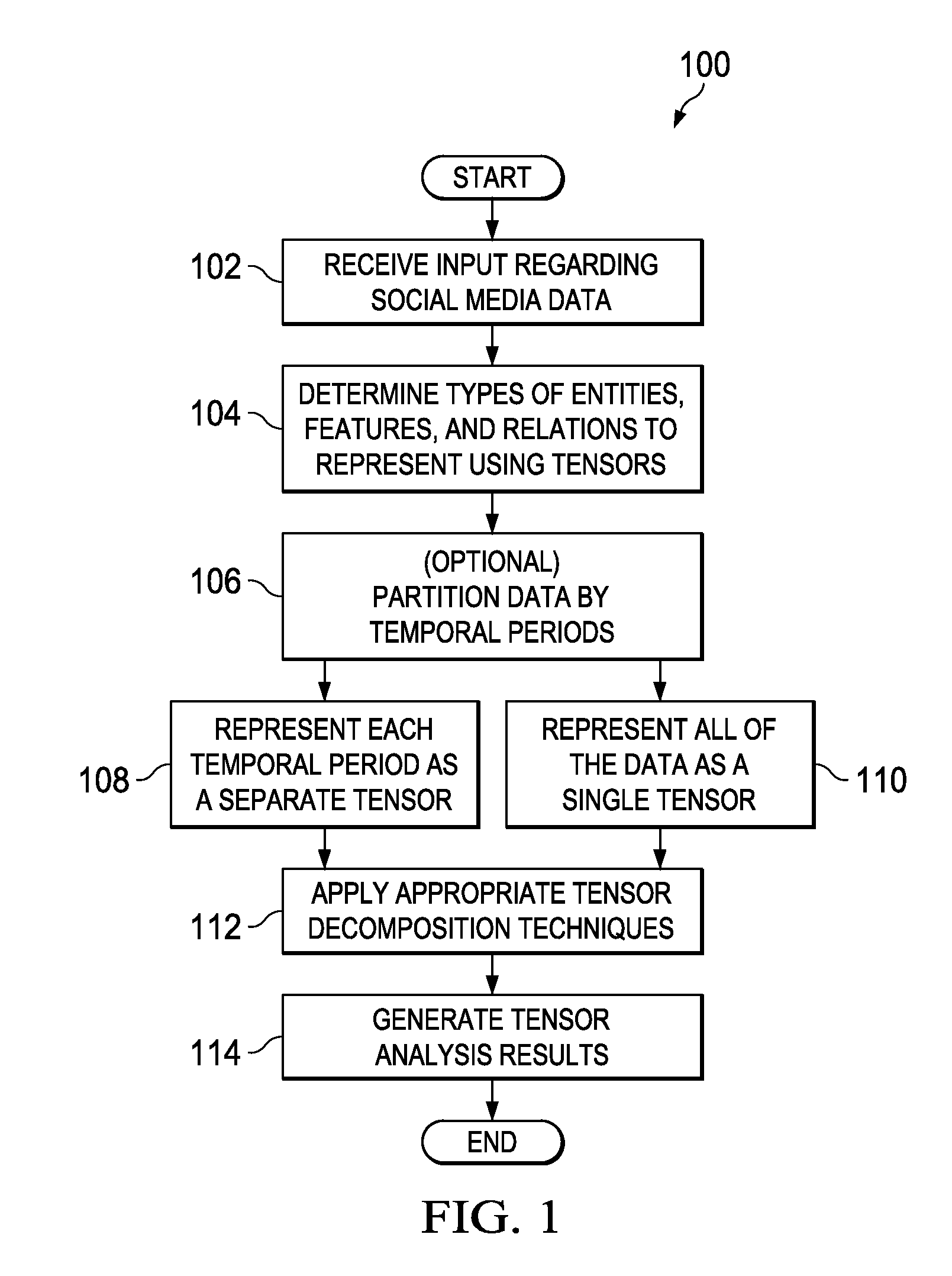Determination of latent interactions in social networks
a social network and latent interaction technology, applied in the field of social network analytics, can solve the problems of inability to perform all of the above aspects in a single representation, the type of analysis is impossible, and the current impossible,
- Summary
- Abstract
- Description
- Claims
- Application Information
AI Technical Summary
Benefits of technology
Problems solved by technology
Method used
Image
Examples
Embodiment Construction
[0027]The illustrative embodiments provide several useful functions. For example, the illustrative embodiments provide for a multi-dimensional mathematical model which synthesizes multiple relationships in a social network, together with topics of discussion, to reveal hidden or latent links, correlations, and trends in social network relationships.
[0028]The illustrative embodiments also recognize and take into account that social network relationships and content in social media may be mathematically modeled using tensors. Relationships between nodes, such as people, organizations, locations, and other entities can be represented simultaneously using tensors. The illustrative embodiments provide techniques to mathematically decompose these tensors to simultaneously reveal topics, themes, and characteristics of the relationships of these entities in a temporal sequence.
[0029]The illustrative embodiments solve the previously unsolved issue of finding latent interactions in social net...
PUM
 Login to View More
Login to View More Abstract
Description
Claims
Application Information
 Login to View More
Login to View More - R&D
- Intellectual Property
- Life Sciences
- Materials
- Tech Scout
- Unparalleled Data Quality
- Higher Quality Content
- 60% Fewer Hallucinations
Browse by: Latest US Patents, China's latest patents, Technical Efficacy Thesaurus, Application Domain, Technology Topic, Popular Technical Reports.
© 2025 PatSnap. All rights reserved.Legal|Privacy policy|Modern Slavery Act Transparency Statement|Sitemap|About US| Contact US: help@patsnap.com



